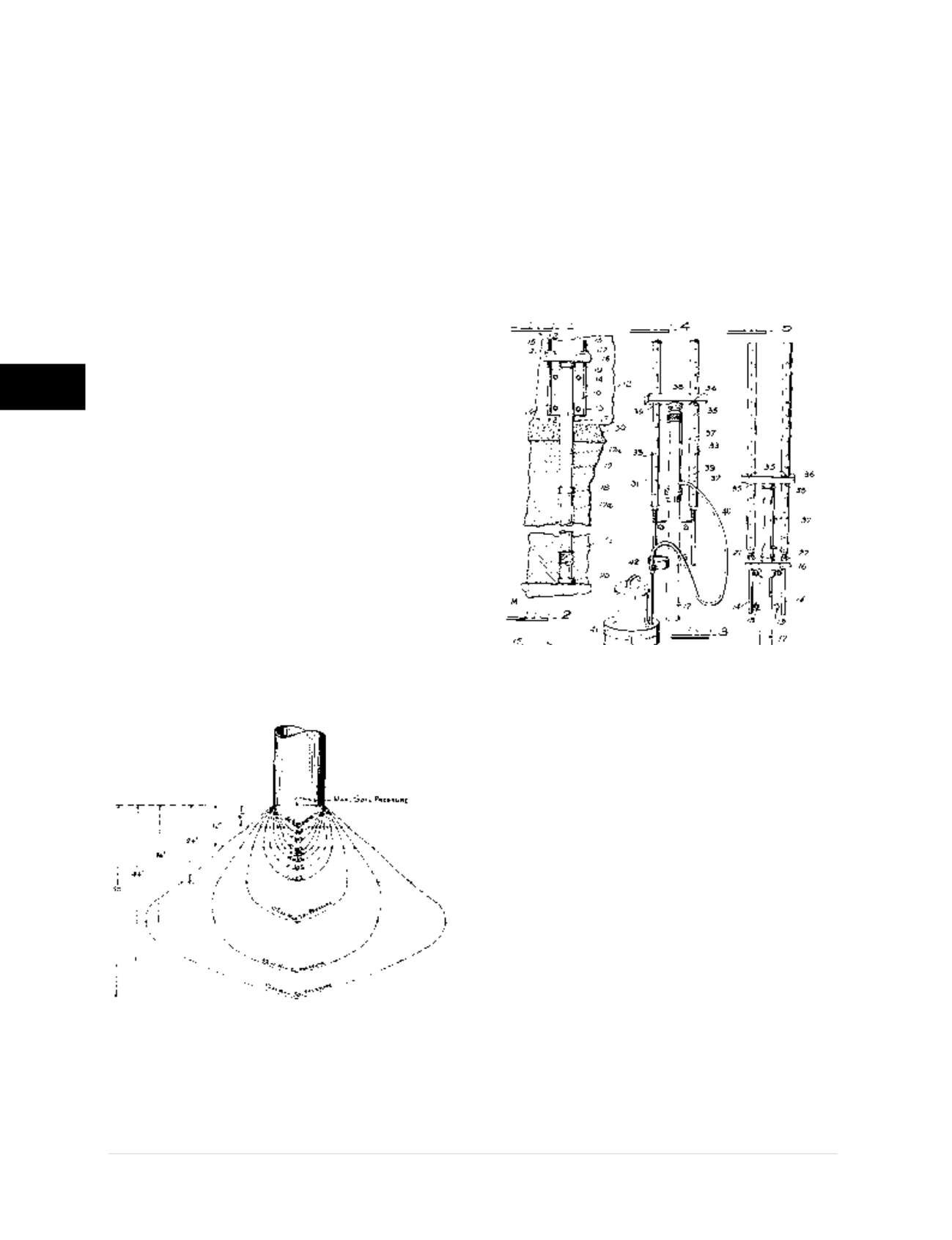

© 2014 Foundation Supportworks
®
,
Inc.
All Rights Reserved
p 222
Chapter 3
Hydraulically-Driven Push Piers
CHAPTER 3
HYDRAULICALLY-DRIVEN PUSH PIERS
The Breuchard system did not specify a factor
of safety to be applied to the service loads and
some problems resulted from underperformance
of the piers after construction. The first patented
push pier system to recommend a factor of safety
was registered by Lazarus White (US Patent No.
1,217,128) on February 20, 1917. Specifically, the
language in the patent recommends a final drive
load about 50 percent greater than the service
load applied to the pier, which equates to a factor
of safety of 1.5 against pier settlement. This patent
also describes using a pressure gauge on the
hydraulic jack to monitor final drive and lock-off
pressures. The White patent detailed geotechnical
considerations, including pier rebound, and
provided a drawing of the assumed pressure bulb
formed under the pier tip upon loading
(Figure
3.1.c)
. In a later patent registered on October 20,
1931 (US Patent No. 1,827,921), Lazarus White
recommended application of the drive force to each
pier individually and then simultaneous loading of
all piers to evenly distribute structural loads during
lock-off procedures. Mr. White also suggested
that previous performance problems with push
pier systems may have been due to overlap of the
assumed stress bulbs for closely spaced piers,
which was believed could be mitigated by using
simultaneous loading during lock-off.
An eccentrically-loaded flush-mount bracket
system was presented in the Henry Revesz
and Jack Steinsberger Patent (US 2,982,103)
registered on May 2, 1961. This system had
many similarities to current flush-mount pier
systems, including attachment of a flush-mount
pier bracket to a foundation wall and using a
drive stand and hydraulic jack to provide the
final drive and lock-off forces. This patent also
recommended applying a factor of safety of 1.5
to the service load to determine the required
final drive load. The components and setup of
this system are shown in
Figure 3.1.d
.
The first patent for a side-load, under-footing
bracket with vertical and horizontal bearing plates
positioned against and below a footing was issued
on September 2, 1975 to George Langenbach
(US Patent No. 3,902,326). The system was
further refined in subsequent patents to resemble
the eccentric push pier systems common today.
The ingenuity of these early inventors paved
the way for the development of numerous push
pier systems and an industry that has grown
dramatically since the 1970s. Manufacturers
and installers of underpinning systems continue
to provide innovative solutions capable of ever-
increasing load capacities and improved system
performance. Systems designed by reputable
manufacturers, installed by experienced
foundation repair contractors, and with a proven
record of performance have become widely
accepted throughout the engineering community.
Figure 3.1.c
Assumed stress bulb
under push pier tip (White, 1917)
Figure 3.1.d
Revesz and Steinsberger
flush-mount push pier system (1961)












